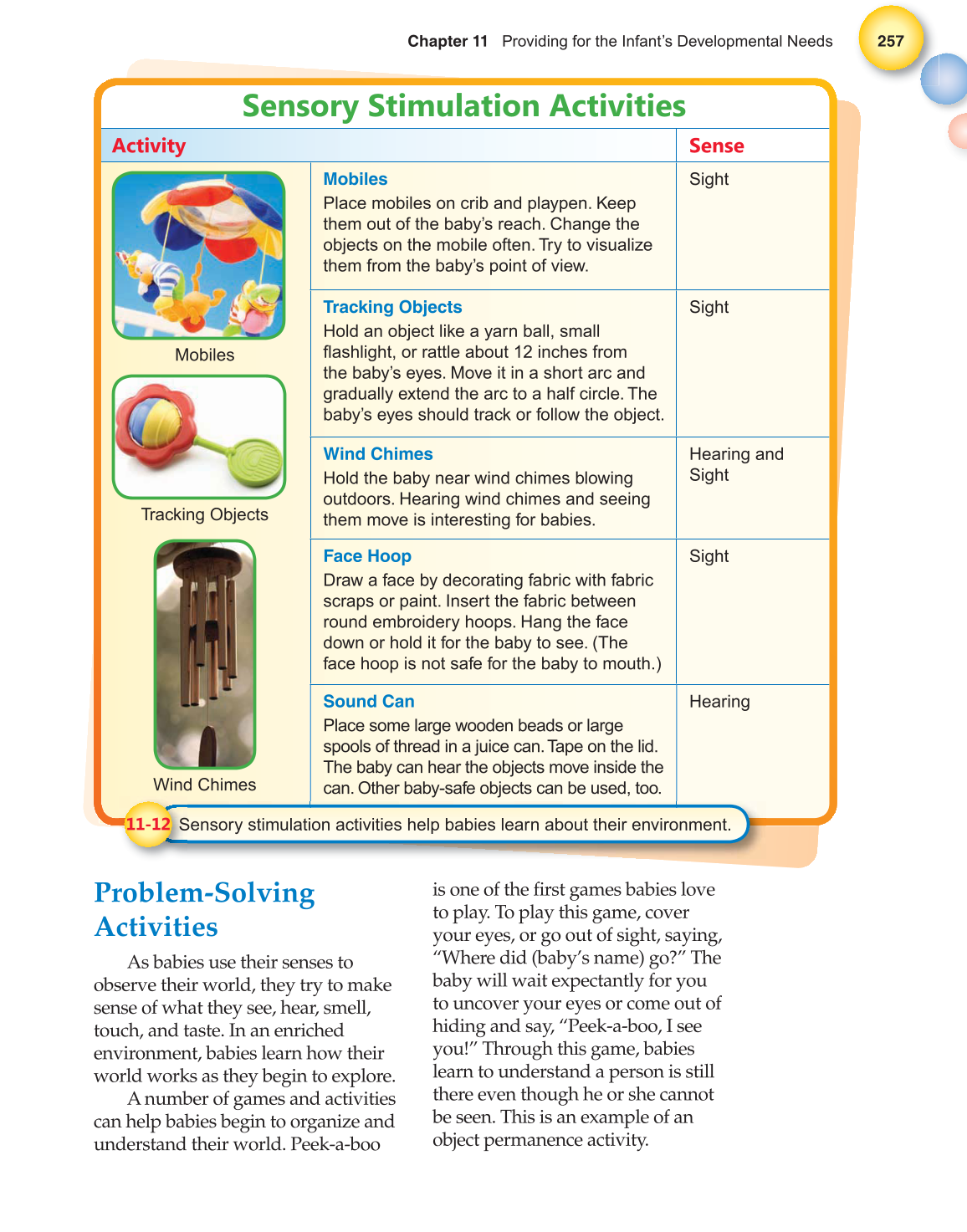257 Chapter 11 Providing for the Infant’s Developmental Needs
Sensory Stimulation Activities
Activity Sense
Mobiles
Tracking Objects
Wind Chimes
Mobiles
Place mobiles on crib and playpen. Keep
them out of the baby’s reach. Change the
objects on the mobile often. Try to visualize
them from the baby’s point of view.
Sight
Tracking Objects
Hold an object like a yarn ball, small
fl ashlight, or rattle about 12 inches from
the baby’s eyes. Move it in a short arc and
gradually extend the arc to a half circle. The
baby’s eyes should track or follow the object.
Sight
Wind Chimes
Hold the baby near wind chimes blowing
outdoors. Hearing wind chimes and seeing
them move is interesting for babies.
Hearing and
Sight
Face Hoop
Draw a face by decorating fabric with fabric
scraps or paint. Insert the fabric between
round embroidery hoops. Hang the face
down or hold it for the baby to see. (The
face hoop is not safe for the baby to mouth.)
Sight
Sound Can
Place some large wooden beads or large
spools of thread in a juice can. Tape on the lid.
The baby can hear the objects move inside the
can. Other baby-safe objects can be used, too.
Hearing
Problem-Solving
Activities
As babies use their senses to
observe their world, they try to make
sense of what they see, hear, smell,
touch, and taste. In an enriched
environment, babies learn how their
world works as they begin to explore.
A number of games and activities
can help babies begin to organize and
understand their world. Peek-a-boo
is one of the fi rst games babies love
to play. To play this game, cover
your eyes, or go out of sight, saying,
“Where did (baby’s name) go?” The
baby will wait expectantly for you
to uncover your eyes or come out of
hiding and say, “Peek-a-boo, I see
you!” Through this game, babies
learn to understand a person is still
there even though he or she cannot
be seen. This is an example of an
object permanence activity.
11-12 Sensory stimulation activities help babies learn about their environment.
